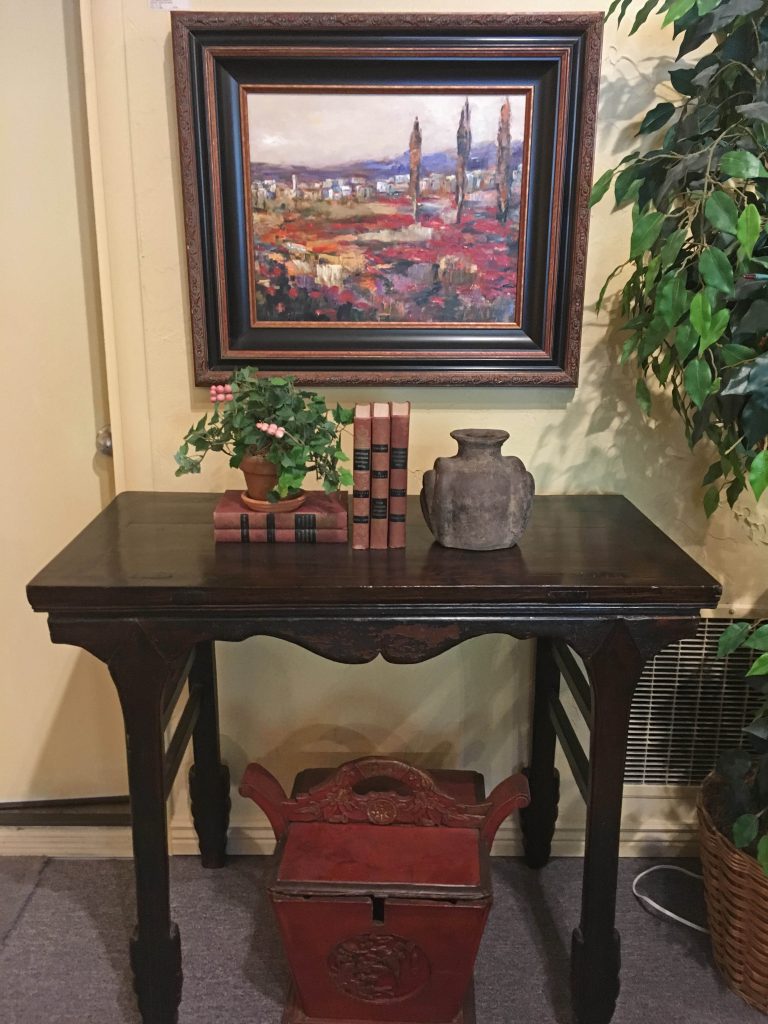
16th Century, Elm, Shanxi. Thick dark lacquer mixed with fibers and “inverted sword leg” style characterize its Ming origin; all-original.
33½” h. 39” w. 19¾” d.
A wine table was essential for most social gatherings and can be traced to the Song (960-1279) period. The table here shows its social importance with traditional styling, exhibiting lyrical lines and classical proportion. The top of this table has a flush panel done in the mitered, mortise-and- tenon method, with the perimeter edge shaped with a tiered “water-stopping” molding. It has a narrow, recessed waist, with long front and back deeply cusped aprons projecting beyond the corners, joining the straight side aprons in a bracket shape with end-frame ties. The legs join the aprons in an “inserted shoulder joint” method of construction in which the leg joins the apron with a mitered joint and has long tenons long tenons penetrating to the surface of the top panel. Each leg ends in a modified inverted “ruyi-shaped” foot. Double side stretchers connecting the add support and decorative elements to the table.
This table shows the original thick reddish-brown lacquer mixed with a fine fibrous ingredient which with age faded at some areas of the apron, exposing bare wood underneath. This kind of lacquer application, together with the style and construction, characterize the table as of Ming origin. The wear on the table also testifies to its antiquity. As the front and back of the table mirror each other, this beautiful table can be placed in the middle of a room on special occasions.